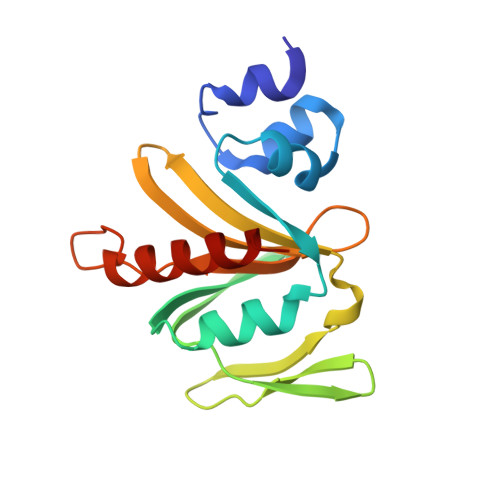New Insight into the Mechanism of Anaerobic Heme Degradation.
Mathew, L.G., Beattie, N.R., Pritchett, C., Lanzilotta, W.N.(2019) Biochemistry 58: 4641-4654
- PubMed: 31652058
- DOI: https://doi.org/10.1021/acs.biochem.9b00841
- Primary Citation of Related Structures:
6U9J - PubMed Abstract:
ChuW, ChuX, and ChuY are contiguous genes downstream from a single promoter that are expressed in the enteric pathogen Escherichia coli O157:H7 when iron is limiting. These genes, and the corresponding proteins, are part of a larger heme uptake and utilization operon that is common to several other enteric pathogens, such as Vibrio cholerae . The aerobic degradation of heme has been well characterized in humans and several pathogenic bacteria, including E. coli O157:H7, but only recently was it shown that ChuW catalyzes the anaerobic degradation of heme to release iron and produce a reactive tetrapyrrole termed "anaerobilin". ChuY has been shown to function as an anaerobilin reductase, in a role that parallels biliverdin reductase. In this work we have employed biochemical and biophysical approaches to further interrogate the mechanism of the anaerobic degradation of heme. We demonstrate that the iron atom of the heme does not participate in the catalytic mechanism of ChuW and that S- adenosyl-l-methionine binding induces conformational changes that favor catalysis. In addition, we show that ChuX and ChuY have synergistic and additive effects on the turnover rate of ChuW. Finally, we have found that ChuS is an effective source of heme or protoporphyrin IX for ChuW under anaerobic conditions. These data indicate that ChuS may have dual functionality in vivo. Specifically, ChuS serves as a heme oxygenase during aerobic metabolism of heme but functions as a cytoplasmic heme storage protein under anaerobic conditions, akin to what has been shown for PhuS (45% sequence identity) from Pseudomonas aeruginosa.
- Department of Biochemistry and Molecular Biology & Center for Metalloenzyme Studies , University of Georgia , Athens , Georgia 30602 , United States.
Organizational Affiliation:


















